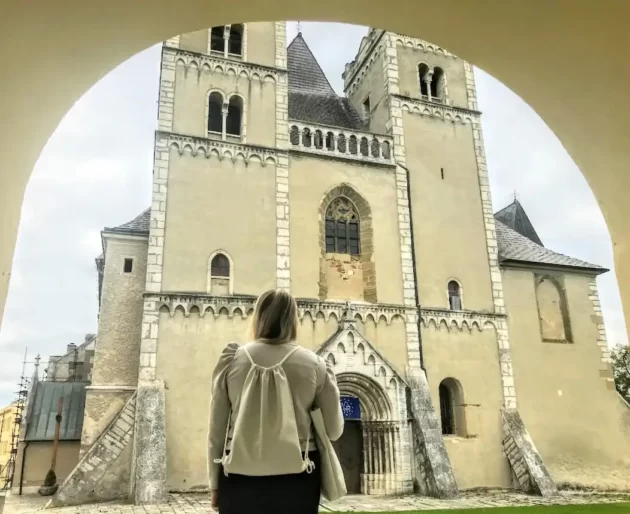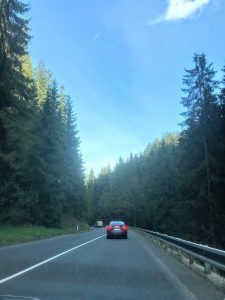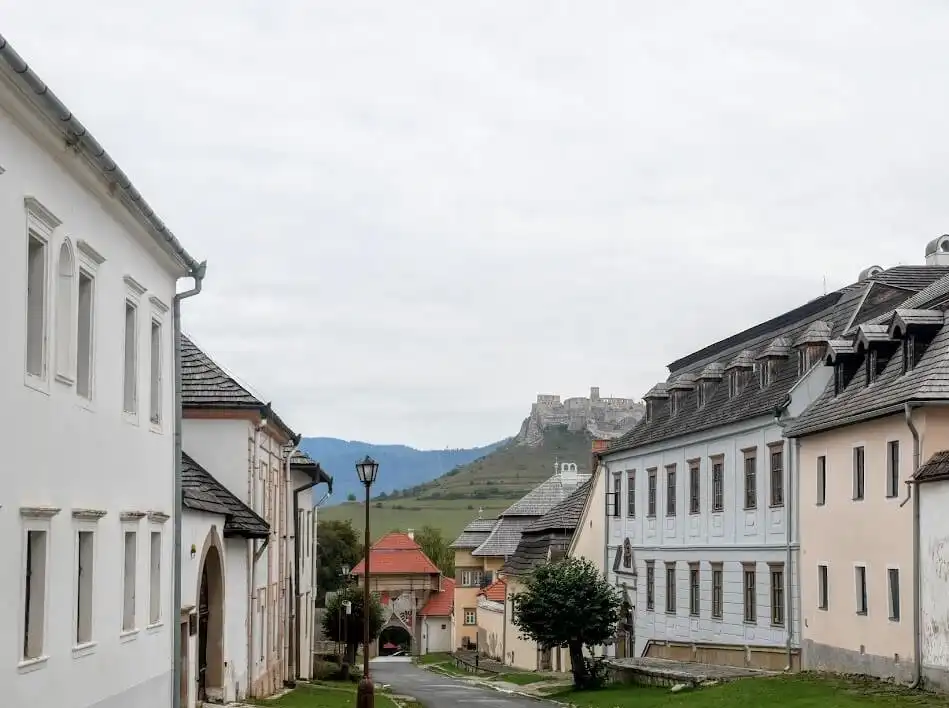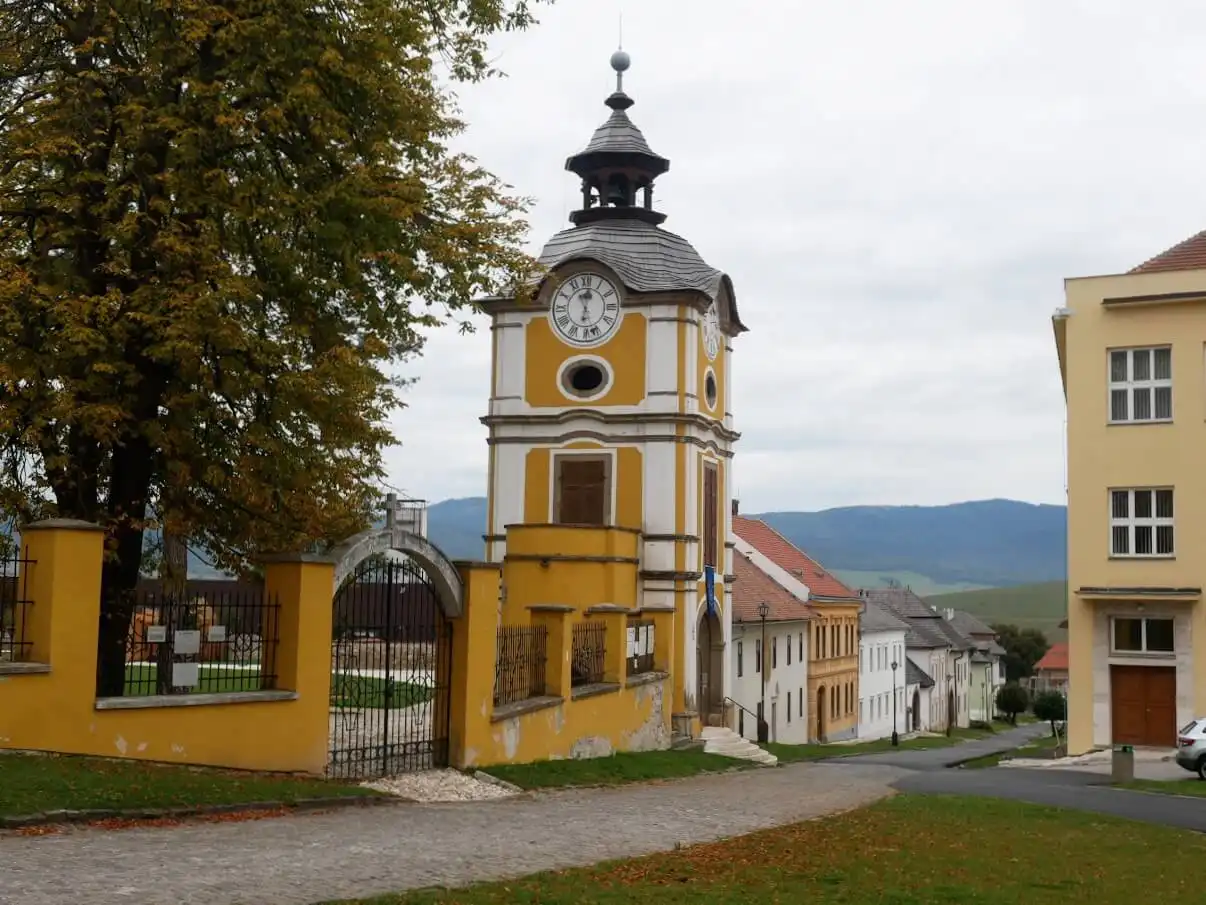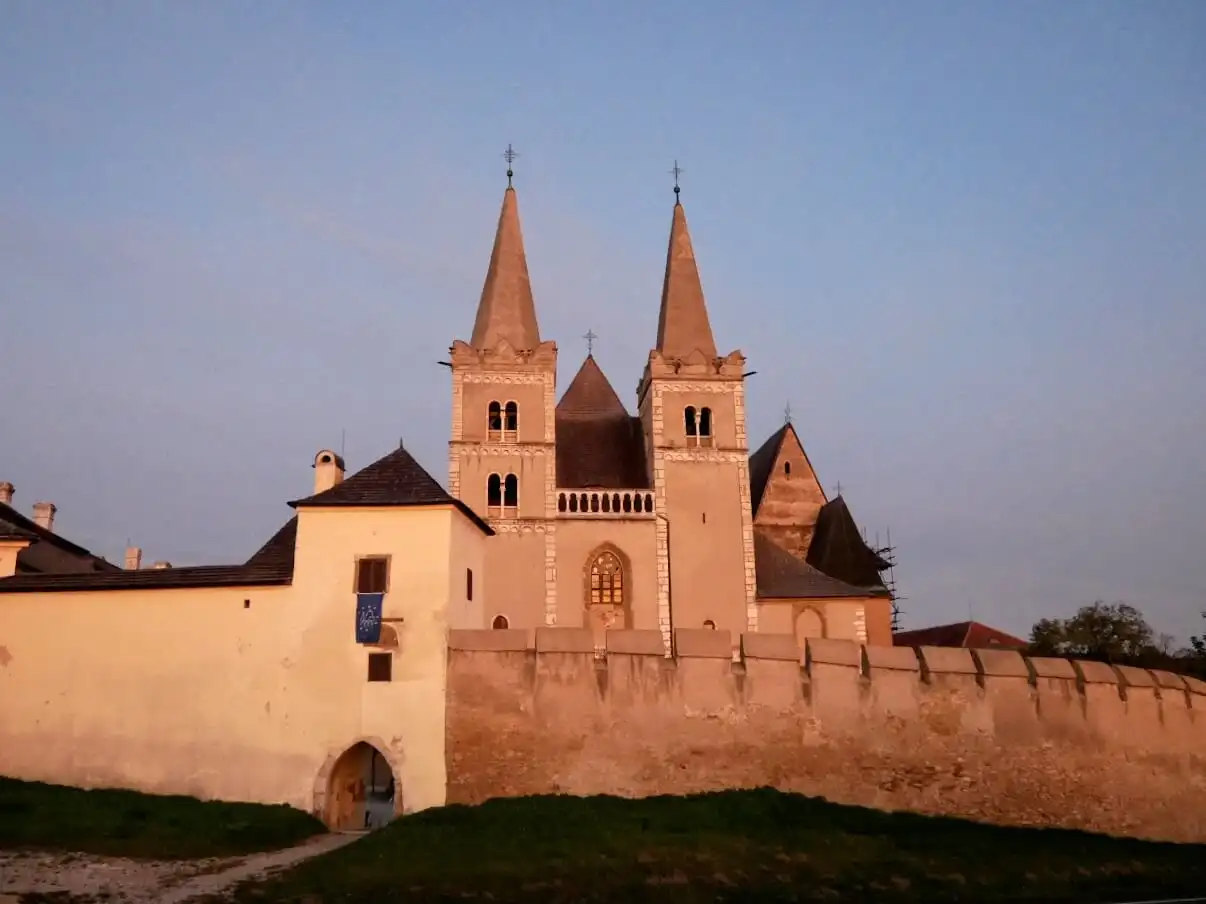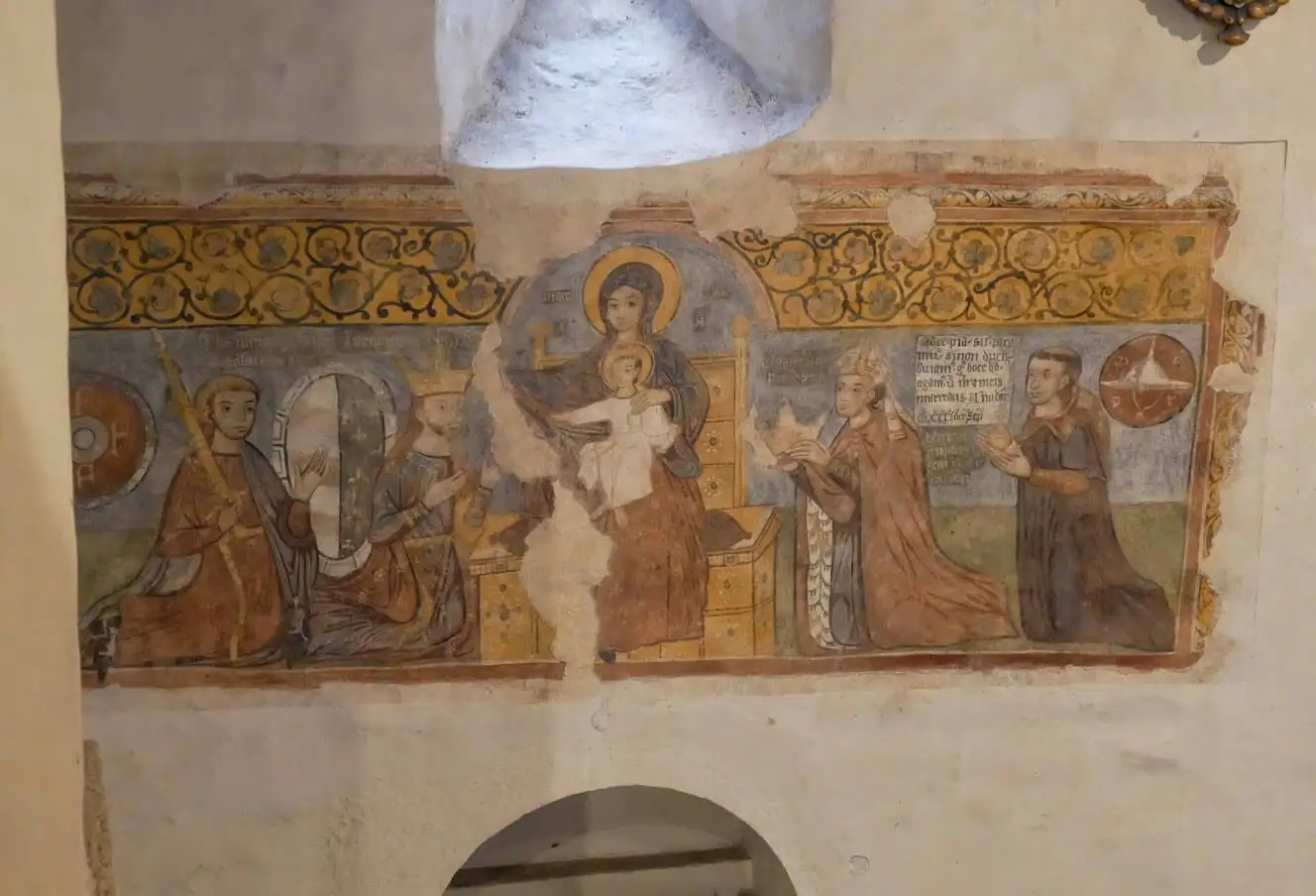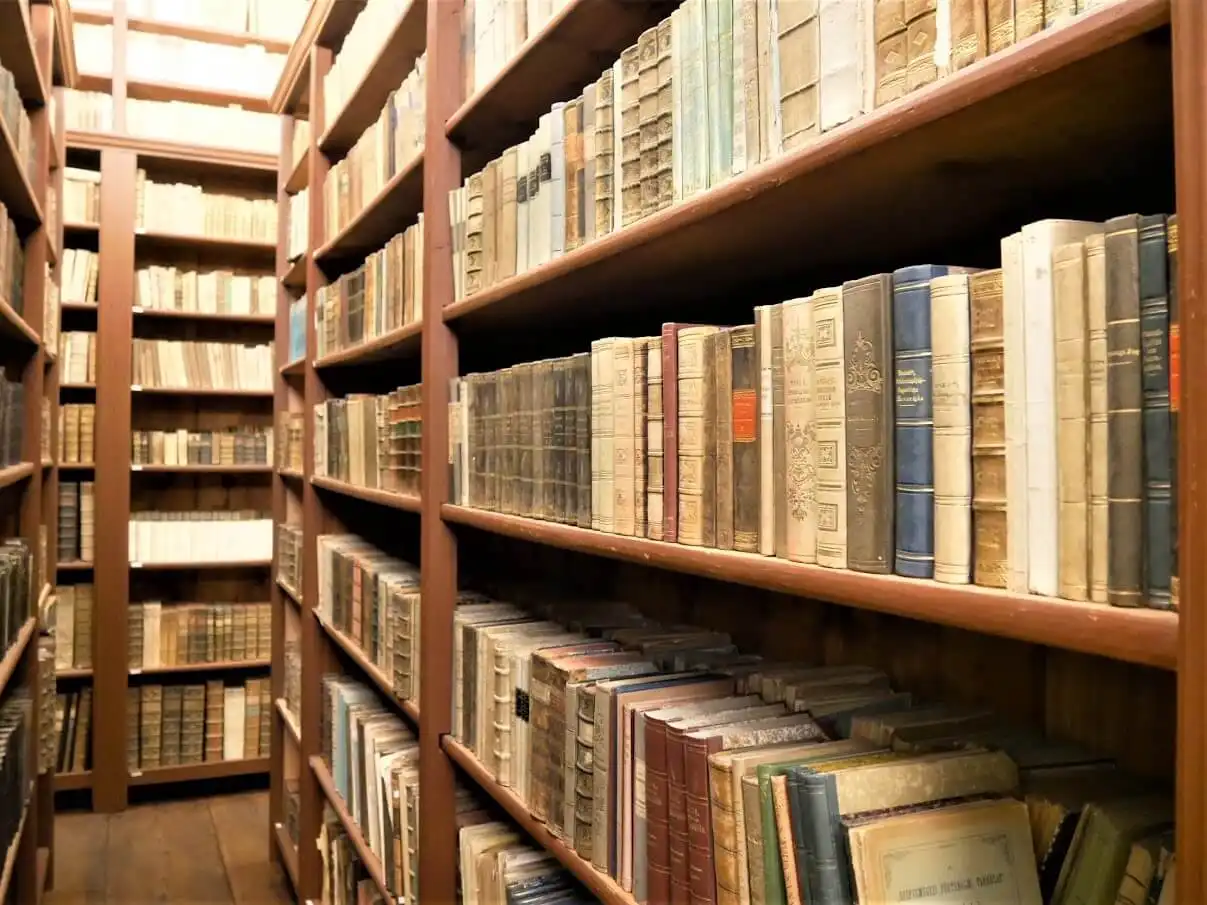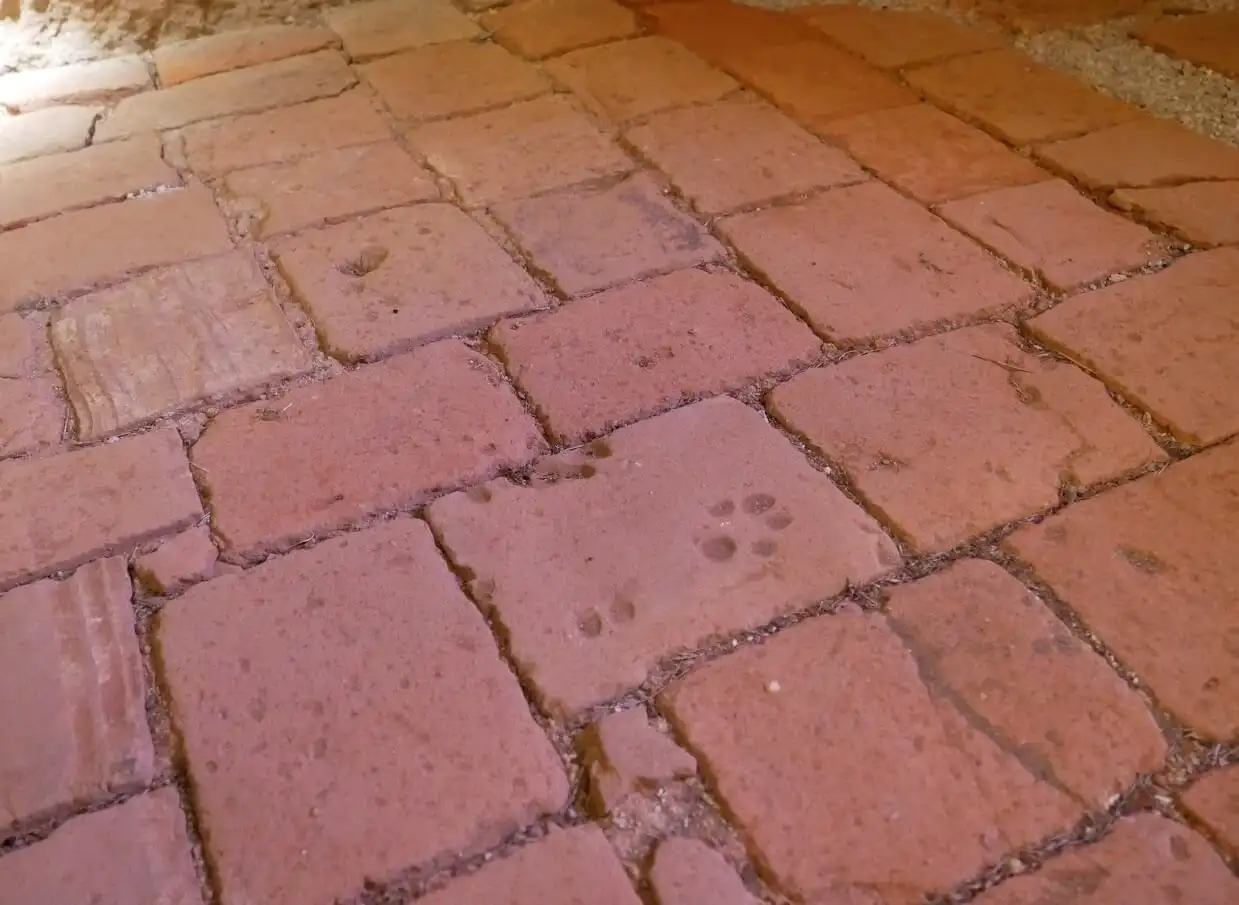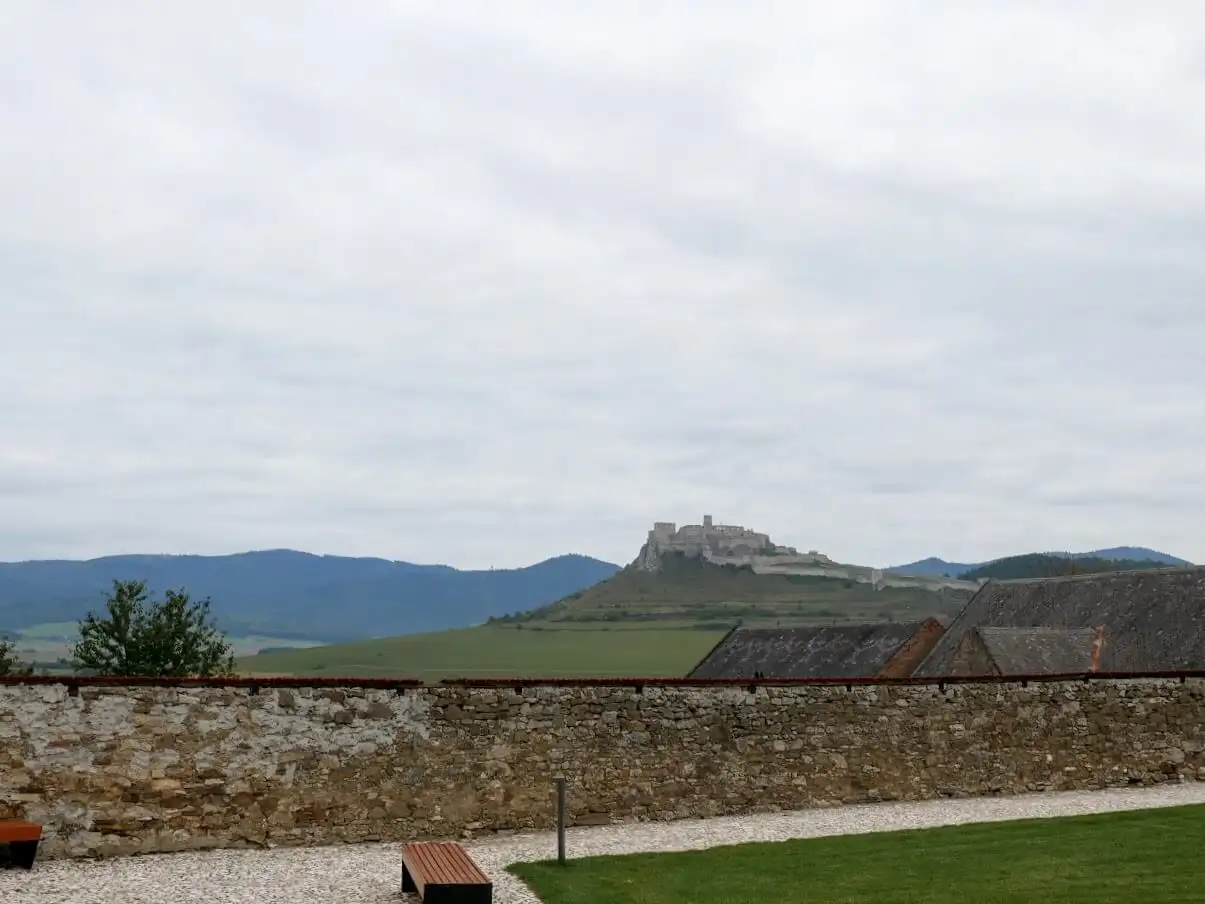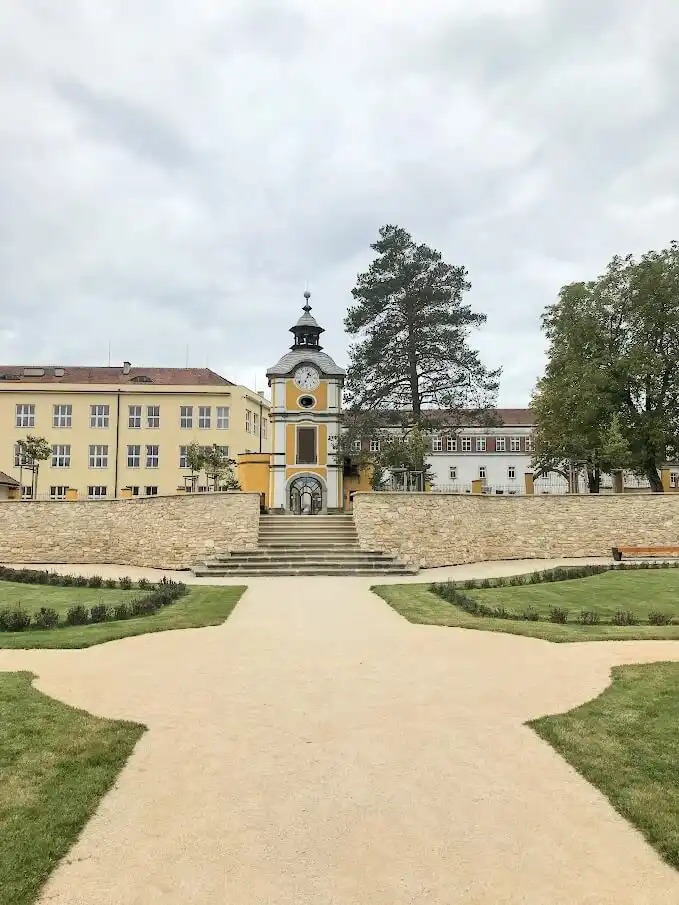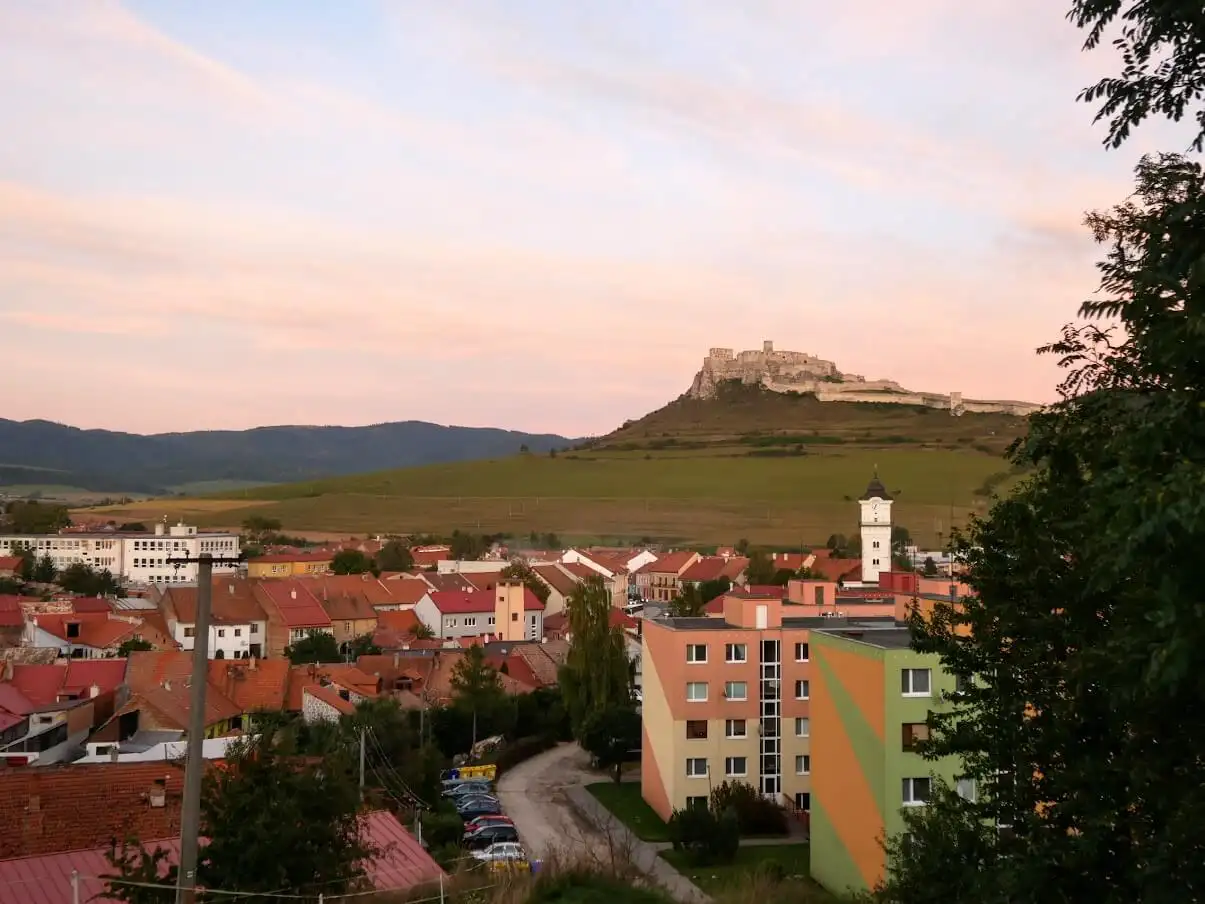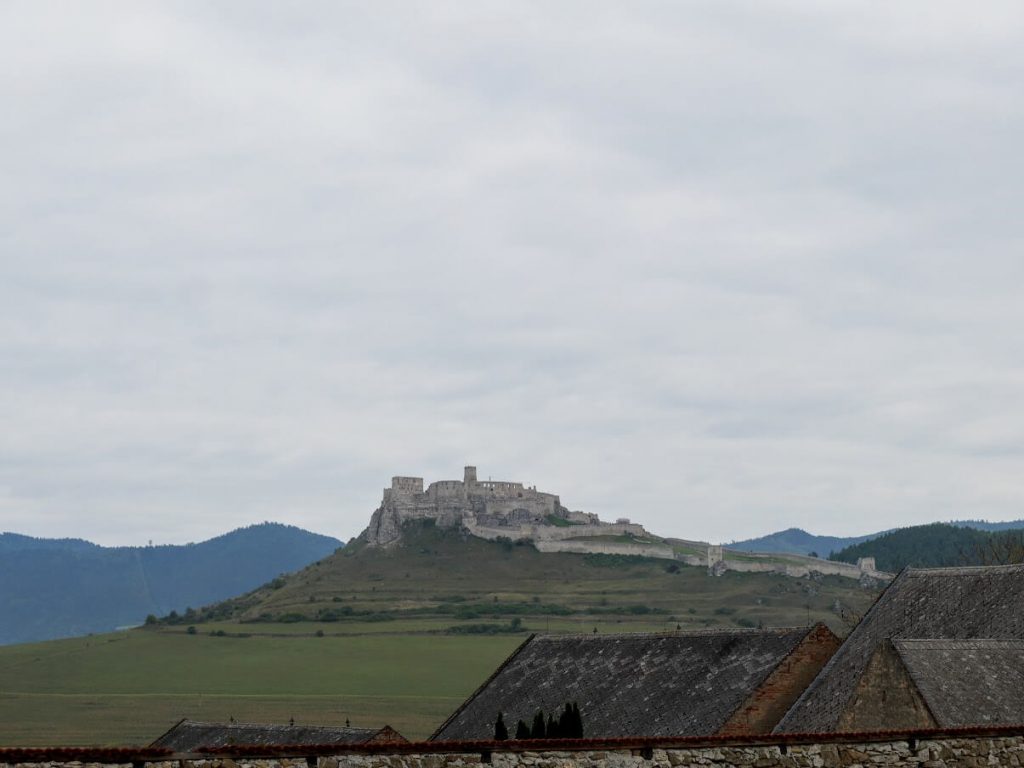Driving in a car towards Spišská Kapitula and Spiš Castle feels like travelling back during the Middle Ages. Surrounded by dreamy hills, in the distance, all of a sudden, you see two white towers of Saint Martin’s Cathedral and a white castle above them. Same as they did during medieval times, they serve as a landmark that lets you know you’re on the right path.
And while arriving closer to them, they become even more magical. It’s almost as the time stands still at that little corner of Slovakia. The charming small town of Spišská Kapitula and the Spiš Castle located next to it were my favourite places I visited in Slovakia. There is not much information online, so here is the Culture Tourist guide to Spišská Kapitula and Spiš Castle in Slovakia.
A Guide to Spišská Kapitula & Spiš Castle in Slovakia
Slovakia is a country that surprised me in so many ways: from its beautiful capital Bratislava, fantastic nature to some hidden gems worth exploring. The charming town of Spišská Kapitula definitely belongs to the last category.
⤷ Read more: Exploring the Transromanica sites in Slovakia
How to get to Spišská Kapitula and Spiš Caste?
Spiš region is located in the north-eastern part of Slovakia. We drove there from Bratislava, and it took us some four and a half hours to arrive. Most of the time, we went on the highway. However, there is around thirty kilometres long mountain passage you have to pass on a regular road.
Despite that, the roads are pretty nice, and the scenery is beautiful along the way. We drove through the deep forests, next to some lovely lakes and massive mountains. And definitely enjoyed our journey from Bratislava to Spišská Kapitula and Spiš Castle.
What to see in Spišská Kapitula
Spišská Kapitula is well preserved historical ecclesiastical town. It’s almost like a small version of the Vatican. Its history goes all the way back to the 12th century. Together with Spiš Castle, it’s listed on the UNESCO World Heritage list.
The small town is surrounded by the fortification walls built during the 17th century. Although their oldest parts date to the 14th century. The city could still be entered only through its three city gates, giving it even more of the historical sense that way.
The whole town consists of only one street filled with old canonical houses. They were homes of canons living and working at Spišská Kapitula. However, today they have different kinds of purposes.
⤷ TIP: One of these houses is home to a lovely Penzion St. Martin. I stayed in it during my visit to Spišská Kapitula and really liked it. Check it out if looking for a place to stay in that small town.
On the western edge of the town, the most exciting building is – Saint Martin’s Cathedral. Its construction started in 1198, and it was completed less than a hundred years later. The cathedral was damaged in the invasions of Tartars and Cumans during the 13th century. Although originally built in the Romanesque style, it was rebuilt in the second half of the 15th century in a new, Gothic style.
The year 1776 was crucial for Spišská Kapitula. This was when Empress Maria Theresa gave it the status of the bishopric. It’s also when the Church of Saint Martin became the cathedral.
Saint Martin’s Cathedral had a rare medieval feature – westwerk. Its inner room, built between the towers for the royal family to join the mass in privacy, could still be seen today.
That western part of the cathedral was the most interesting because it hides so many exciting places. First was the small chapel that was used for masses and liturgy during the Gothic renovation. Today it hosts a small exhibition of relics found in the church.
However, even more interesting is the cathedral’s library located just above that chapel. It was so fascinating to see numerous old books preserved inside of it. That place witnesses so well the educational role the Catholic Church had in Europe during the past.
One of the most exciting and controversial books there was ‘Malleus Maleficarum’. Published by the Inquisition in Germany in 1487, the book was used as a guide for the witches and warlocks hunting during that dark period in European history.
While exploring these oldest parts of the cathedral, it was interesting to see traces of its history on its architecture. Not only the remains of previous architectural structures were showing that. Its history could also be spotted by the darker parts of one of the tower’s interiors, which was once caught by the vigorous fire. Or by the footsteps made by probably a cat which at some point lived inside the church.
The cathedral was also home to a historical version of the notary’s office, back in the time. People would come there and made their agreements and documents official. To keep track of those files, one copy of the documents was saved inside the cathedral. Bags hanging high from the ground in which these documents were kept, to keep the mice away, could still be seen inside it.
Next to the cathedral, the Bishop’s Palace is located. The building still has the original purpose. One part of it is used for representational visits and could be visited. With its historic furniture, some of the rooms are quite fascinating. In one of the main rooms, portraits of all the bishops that served in Spišská Kapitula are exhibited.
Bishop’s Garden is another lovely place not to be missed while in Spišská Kapitula. Not only it’s a beautiful garden surrounded by some historic buildings. But it also provides one of the best views of Spiš Castle.
Located just outside the western walls of Spišská Kapitula is another interesting site worth exploring in the Spiš region. It’s Spiš Jerusalem, a complex of sacral buildings that are reminiscing those in the actual city of Jerusalem. During the Turkish invasion, pilgrims couldn’t travel to the Holy Land. That’s why a miniature version of that important town was built just outside the Spišská Kapitula.
Wandering around those small edifices, exploring some fantastic nature of that region while visiting some of these beautiful cultural landmarks will make you feel like a medieval pilgrim.
⤷ Read more: The most interesting European myths and legends
Spišské Podhradie
Located between Spišská Kapitula and Spiš Castle, the history of Spišské Podhradie is closely linked to both of them. The small town was founded as a settlement for servants working in the castle. However, soon it became an independent town inhabited already during the Middle Ages by merchants and craftsmen.
Its main square still witnesses about its former citizens because of the numerous houses that used to belong to them. While walking around them, you’ll enjoy one of the best views of Spiš Castle.
Spiš Castle
Spiš Castle is one of the largest castles in Slovakia and one of the best-preserved medieval fortifications in Europe. It was built on an excellent strategic position overlooking two important trade routes connecting High and Low Tatras.
The hill on which the Spiš Castle is located has been inhabited since Prehistory. The skull of a man from the Neolithic was excavated close by, together with the coins from Celtic and Roman times.
Although an earlier construction existed, the present-day castle dates from the 12th century. The three storeys Romanesque palace is a rare example of the preserved secular architecture from that period. Most researchers agree that the same builders worked on the Saint Martin’s Cathedral in Spišská Kapitula and the Spiš Castle construction. They most likely came from Italy.
The castle belonged to the royal Arpad and Anjou families. However, its owners were also some noble families like, for example, Zápolya. The last noble family who lived in a castle was Csáky. They left it after a massive fire that damaged most of the complex in 1780.
After that, the castle slowly declined until the second half of the 20th century, when the archaeological excavations started. One part of it was restored, and a museum was opened inside of it. Today, they host exhibitions about historical armour, weaponry and some medieval torturing devices.
⤷ Read more: 21 Most beautiful castles in Europe
Located in the beautiful scenery and with its medieval architectural complexes that seem as they didn’t change for centuries, Spišská Capitula, Spišské Podhradie and Spiš Castle are wonderful places to visit. They still have that authentic look of European historical sites that haven’t been overrun by mass tourism. Hopefully, this guide to Spišská Kapitula and Spiš Castle will make your visit even more enjoyable.
Watch my video about the TRANSROMANICA sites in Slovakia below:
I visited these sites in the Spiš region on a press trip organised by Transromanica and their partners in Slovakia. Many thanks to all of them for organising such a wonderful trip for me. And for introducing me to the magical world of medieval Slovakia.
For more information about them, visit Transromanica’s website or read Transromanica Travel Magazine. For more info about travelling in Slovakia, visit official Slovakia’s Tourism Board Website.

